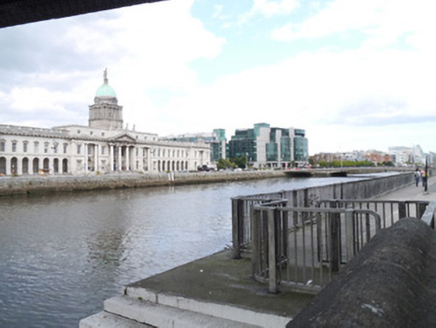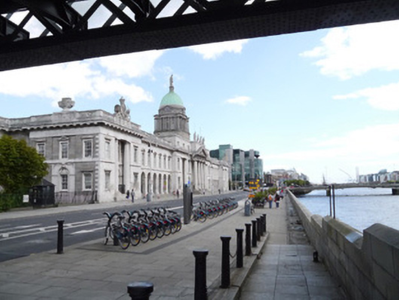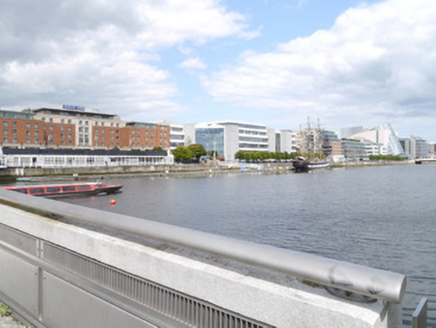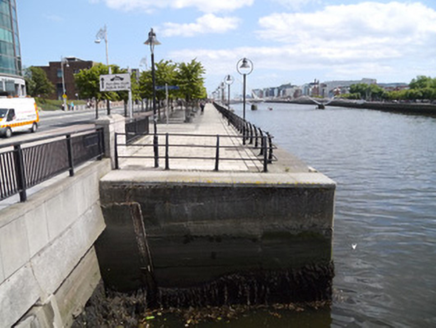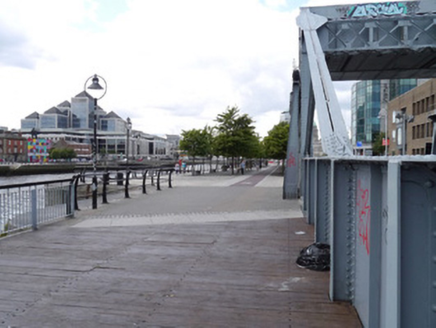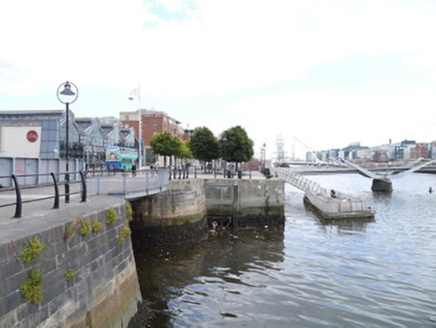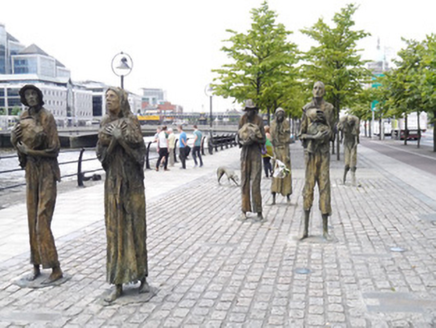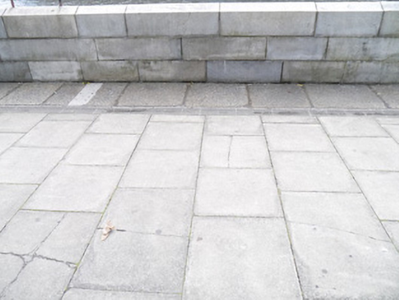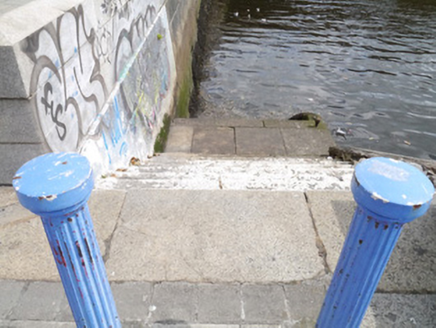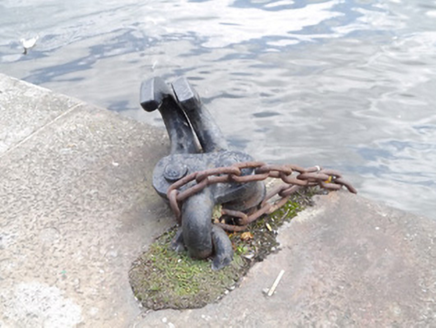Survey Data
Reg No
50060555
Rating
Regional
Categories of Special Interest
Architectural, Social, Technical
Original Use
Quay/wharf
In Use As
Quay/wharf
Date
1780 - 1800
Coordinates
316379, 234500
Date Recorded
04/07/2014
Date Updated
--/--/--
Description
Granite ashlar quay, built c.1790, one of several continuous quays that define north side of Liffey. Quay walls are ashlar granite blocks with saddle-back finish, ramped in places. North side bounded by flagstone pavement with granite kerbs, with steel flagpoles adjacent. Custom House located at west end of quay. Quay also retains range of warehousing and Sherzer Rolling lift bridge to eastern end. Memorial to Great Famine by Rowan Gillespie, erected 1997.
Appraisal
Custom House Quay is highly significant as the setting for James Gandon's neoclassical Custom House, one of the city's grandest buildings, built to reflect the its position as a buoyant centre of eighteenth-century trade and commerce. Casey (2005) describes the quay, in the context of the Custom House, as 'the single most important collection point in the Irish Revenue system'. It is the most easterly of a linear arrangement of quays lining both sides of the Liffey, and retains something of its maritime flavour, located in close proximity to the original warehouses, dock basins and industrial infrastructure than remain in the area. Together, the quays are reminders of the economic and maritime development of Dublin city as Ireland's principal port.
